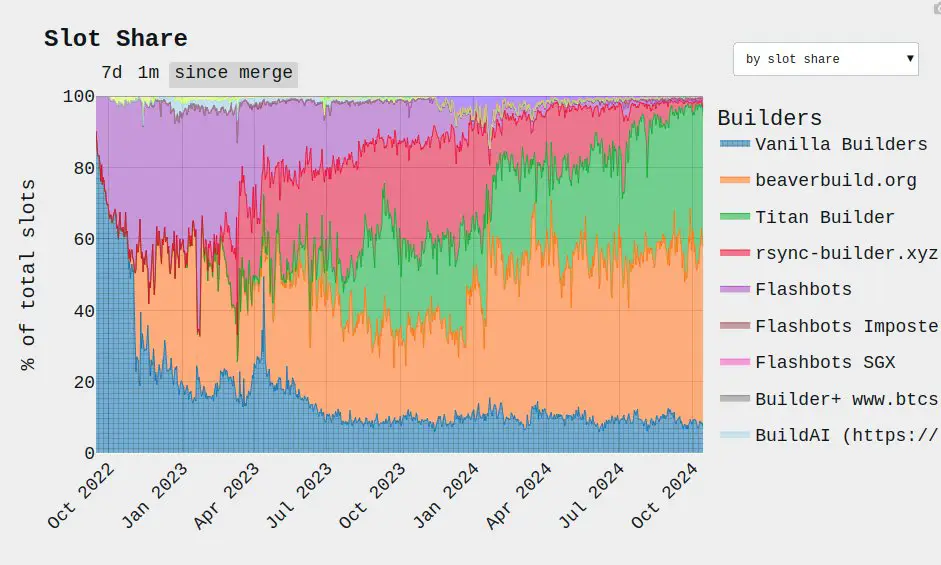Ethereum co-founder Vitalik Buterin has shared several solutions to help Ethereum minimize block production and staking centralization through the “Scourge” phase , in his latest article, ‘Possible futures of the Ethereum protocol, part 3: The Scourge’


Vitalik Buterin also shared his concerns on decentralization saying that economies-of-scale within staking has led to small staking pools leaving for larger pools, while two entities have built 88% of Ethereum blocks over the first two weeks of this month.
Note that Ethereum Foundation researcher Toni Wahrstätter was the first person to point out that two Ethereum block builders namely Beaverbuild and Titan Builder, had built 88.7% of all Ethereum blocks over the first two or so weeks of October.


Calling staking centralization as one of the biggest risks to Ethereum, he said, “One of the biggest risks to Ethereum L1 is proof-of-stake centralizing due to economic pressures. If there are economies-of-scale in participating in core proof of stake mechanisms, this would naturally lead to large stakers dominating, and small stakers dropping out to join large pools.” The dominance of higher stakers poses threats including higher risk of 51% attacks, transaction censorship, and other crises. Vitalik had previously proposed improvements to Proof of Stake, and his aim for 1 ETH Validator staking in his article posted on October 17.
As a solution, Buterin has pitched an inclusion lists approach in which proposers and builders share the task.
Buterin, claims, “The leading solution is to break down the block production task further: we give the task of choosing transactions back to the proposer (i.e. a staker), and the builder can only choose the ordering and insert some transactions of their own. This is what inclusion lists seek to do.”
Buterin also touched upon how the current staking growth could potentially make one liquid staking token (LST) more dominant and reduce liquidity, and to tackle this, the team is exploring reducing staking rewards and capping the amount of ETH that could be staked.
Also Read: Vitalik Buterin Proposes Scaling Ethereum’s L1 for Maximum L2 Growth
Source: https://www.cryptonewsz.com/vitalik-buterin-ethereums-staking-block-issues/